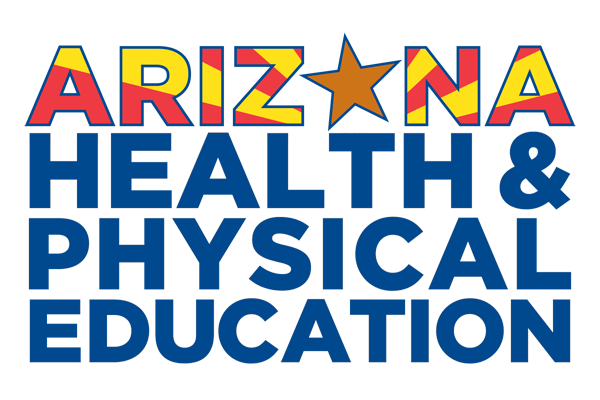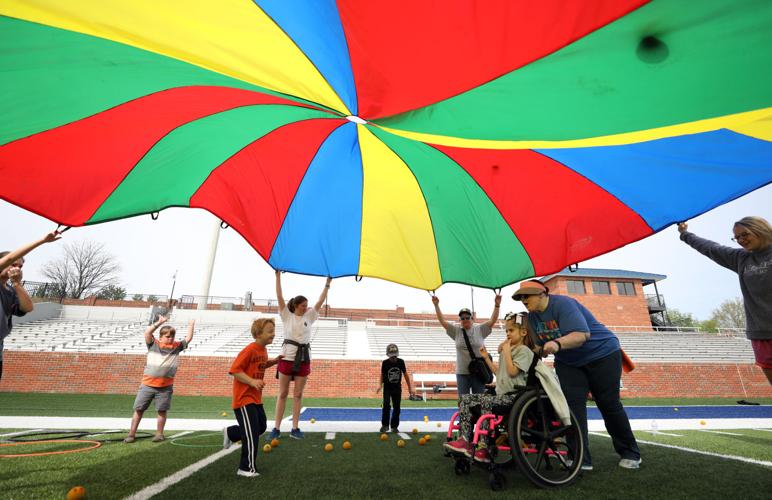(and some fun games to try with your students)
April 2023
Greetings Arizona Health and Physical Education members! I hope everyone had a wonderful spring break and was able to enjoy a welcomed three day weekend for the Easter Holiday. We are in the home stretch (most of us in Arizona finish up around the end of May) yet right now schedules can be a little wonky due to standardized testing! Hang in there, we will get through it!
The last couple of blogs have been full of very ‘lecture like’ information filled with definitions, policies and best practices. This month I’d like to offer everyone a set of games I’ve used in my unified physical education courses when everyone needs to just have a little fun!
But first, I’d like to just differentiate (I know, another best practices word) between three terms adapted physical educators tend to use to describe their classes: Adapted Physical Education, Unified Physical Education and Modified Physical Education. What’s the difference?
Well, that can be a loaded question, the answer depending on where you are from, where you went to school, and what your current school district says. I will do my best to point out some differences between the three so maybe one day we can all be on the same page.
In the Mesa Public Schools district, students can enroll in a high school course called ‘Unified Physical Education’. The description in the course catalog reads:
The Unified Physical Education course is structured around grade level physical education standards and provides the opportunity for students with and without disabilities to come together through ongoing educational and physical activities. Additionally, the course supports the development of leadership skills for all students as well as the empowerment of all students to foster an inclusive class and school-wide environment.
Whereas the modified physical education course description reads:
For students who cannot participate in a regular P.E. program because of physical limitations or medical reasons. Individualized programs are designed, by the instructor and the student, to conform to the students’ abilities and medical advice. Some group activities are arranged.
Looking at these two descriptions, the main difference you might notice is that the Unified course involves student peer buddies, or ‘partners’ as we call them, who enroll in the class and become peer support for our students with disabilities. Some of the students with disabilities in the class may be on IEPs for adapted physical education, while others are not. These classes typically have an equal number of students with and without disabilities who are paired up to work together to participate in the class activities. Whether you have a disability or not, all are encouraged to enroll and all receive a physical education credit.
What the description does not mention is that this Unified Physical Education class implements the Special Olympics curriculum and students are given the opportunity to travel to different schools within the district and compete in sports such as basketball, track and field and volleyball.
The modified physical education class on the other hand also involves students with and without disabilities working together in the same yet possibly a more subtle physical education environment than your typical general physical education class. Typically this placement is suggested by the adapted physical education teacher as a student’s least restrictive environment (LRE). In addition, a modified physical education class will follow a typical level appropriate curriculum but the activities may include modifications to the equipment, rules, environment and teaching styles.
The beauty, at least in my opinion, is two fold. First, students with and without disabilities have the opportunity to work together and learn from each other, forming friendships that go beyond the physical education classroom. Secondly, from a teacher’s perspective, having peer budding for our students with unique needs is like having enough instructional assistants (or paraprofessionals) that each student has support. That’s a dream come true!!
This leaves us with adapted physical education. Typically, at least in Mesa, an adapted physical education class is taught to a very small group of students, perhaps a class of students from a self-contained class or several students from several different self-contained classrooms in one location. In our district finding that location is part of the challenge mentioned in my first blog “What do adapted physical education teachers really do?” (see that blog here: https://www.azhpe.org/what-does-the-adapted-physical-education-teacher-really-do/). Sometimes we are relegated to a music room not in use a day or two a week, sometimes we are in a small gym or multi-purpose room and sometimes the only option is the self-contained classroom itself. Regardless of where we can find a space, the purpose of a small adapted physical education class is to work on skills (locomotor, object control, management practices) that will enable those students to be more successful in the general physical education class.
So there you have it! Again, depending on where you teach and what your school district policies are, your settings may look very different, but this is what we do just to give y’all an idea.
I promised some game ideas! Below you will find a link to a google doc of various games I’ve played with both my unified and modified classes. I did not invent these games but I have made my own modifications on the rules and or equipment. Please feel free to do the same, just please make a copy of the ppt and save it to your own drive before making any changes.
https://docs.google.com/presentation/d/1mhwHkef6Akc-3Ohc6X3GOAH64AhIHu-8/copy
Thanks and please feel free to reach out if you have any questions! If I don’t know the answer, I will do my best to find someone who does!
Cheers,
Jennifer

